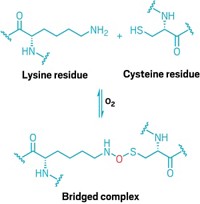Advertisement
Grab your lab coat. Let's get started
Welcome!
Welcome!
Create an account below to get 6 C&EN articles per month, receive newsletters and more - all free.
It seems this is your first time logging in online. Please enter the following information to continue.
As an ACS member you automatically get access to this site. All we need is few more details to create your reading experience.
Not you? Sign in with a different account.
Not you? Sign in with a different account.
ERROR 1
ERROR 1
ERROR 2
ERROR 2
ERROR 2
ERROR 2
ERROR 2
Password and Confirm password must match.
If you have an ACS member number, please enter it here so we can link this account to your membership. (optional)
ERROR 2
ACS values your privacy. By submitting your information, you are gaining access to C&EN and subscribing to our weekly newsletter. We use the information you provide to make your reading experience better, and we will never sell your data to third party members.
Environment
Accelerated Electron Transfer Observed In Model Protein
June 30, 2008
| A version of this story appeared in
Volume 86, Issue 26
In biological systems, electron flow often occurs very quickly between distant redox centers in electron-transfer proteins. Researchers have proposed that charge transfer in such proteins is accelerated by redox-active amino acid residues that act as donors or acceptors to relay electrons between the redox centers. But experimental evidence for this proposal has been indirect and inconclusive. A collaborative team based at Cornell University, California Institute of Technology, and the University of London has now obtained the best direct experimental evidence for the proposal so far by assessing the influence of an intervening tryptophan residue on the rate of electron transfer between redox centers in a semisynthetic model protein (Science 2008, 320, 1760). The team found that electron transfer between distant redox centers in an azurin protein mutant occurs about 300 times faster when the tryptophan residue is present than when it is absent. Researchers believe such expedited electron transfers can potentially be exploited in the design of new energy-yielding devices, among other applications.





Join the conversation
Contact the reporter
Submit a Letter to the Editor for publication
Engage with us on Twitter